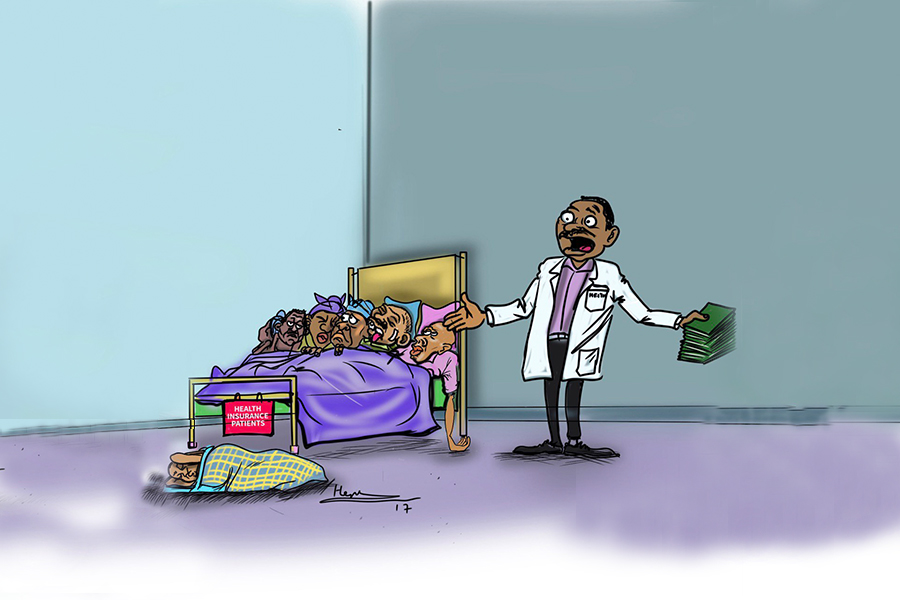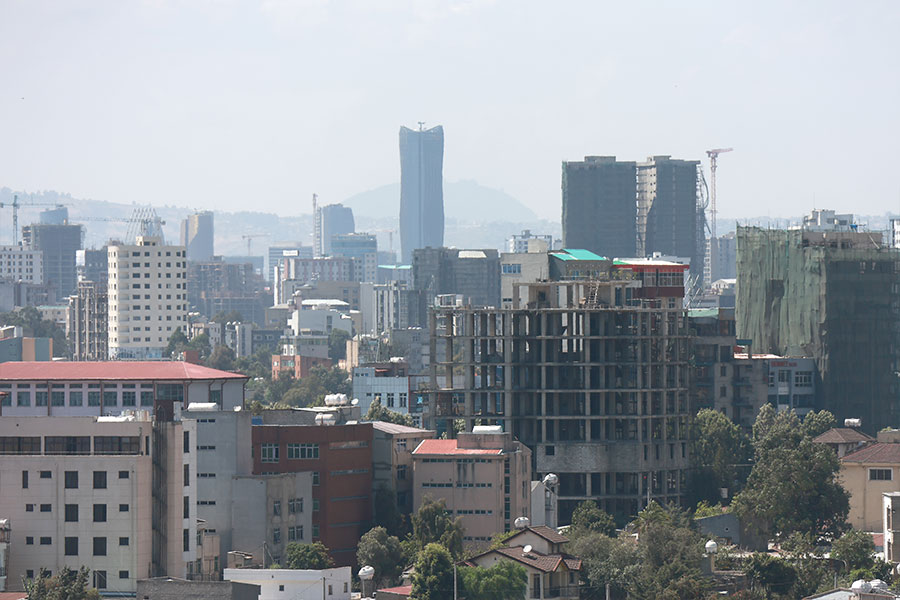
Agenda | Jul 17,2022
Mar 27 , 2021
By Christian Tesfaye
Few things speak louder of the poor state of a country than child labour. Technically, there are laws against this in Ethiopia. The labour law does not allow the employment of children under 14 for any purpose. If they are between that age and 18, there are limitations on the sorts of work they are allowed. The criminal code prohibits the trafficking of children for compulsory labour.
But often in Ethiopia, laws are taken as standards to live up to, not rules the violation of which are punishable by a court – hardly worth the paper they are written on sometimes. The same goes for child labour. It is rife and unimaginably ugly but a fact of life for anyone that bothers to take note.
The younger the child is, nonetheless, the harder it is to fail to notice. There was just one kid working on a minibus taxi as an assistant to the driver (redat) that was hard to fathom for me. He could barely shut the sliding doors and was barely visible above the car seats even when standing straight. He had dry plump cheeks and rough, cracked hands.
He was diligent and quick on his feet for his age. From his physical stature, he must have been around six. If he was older, he must be suffering from malnurished, making him one of the over 30 million people suffering from the same ailment in Ethiopia. He is also one of the 27pc of the youth population participating in the labour force. Many of these are robbed of their childhood and opportunities to learn. Worse still, they may not have guardians and could be one of 20,000 children trafficked into compulsory labour, according to Humanium, a children’s charity.
Given how harsh these conditions are, how vulnerable the children could be, and the long-term consequences on human capital, this is top of the agenda, right? Children growing up in debilitating poverty, selling their labour for sums well under the poverty threshold as an alternative to begging, is a priority for society, no?
Not at all. There are neither rallies against child labour nor would anyone storm the streets over it. No one goes to war over starving children. What society puts on a pedestal –worthy causes to kill, maim and massacre for –are nationalism, historical memory and offenses and slights against one group by another. Child labour does not even get a measly hashtag, except perhaps on the World Day Against Child Labour, and even then because it does not hurt to virtue signal. Few in nonprofit organisations and government agencies working on children’s issues take a lasting interest.
Ethiopia is not alone in this. Most of the Global South – where all the bad things seem to happen – has high levels of child labour. More than a quarter of all children in poor countries are engaged in labour activities. UNICEF counts from five-year-olds who start providing 21 hours of unpaid housework services a week.
The culprit is poverty. If not enough wealth is created, millions of children will fall through the cracks to depend, or be forced to rely, on their labour to close income gaps for themselves and their guardians. Lack of wealth also means a government unable to provide a social safety net for its citizens, not even children.
There is no magic bullet. If there was one, laws should have worked. Enforcing them more strictly could help to an extent but not when poverty is entrenched and there is great demand for such cheap labour.
PUBLISHED ON
Mar 27,2021 [ VOL
21 , NO
1091]


Agenda | Jul 17,2022

My Opinion | Jun 07,2025

Sunday with Eden | Oct 26,2024

Fortune News | Mar 21,2020

Fortune News | Jul 17,2022

Radar | Dec 19,2020

Viewpoints | Nov 02,2019

Radar | Oct 23,2023

Life Matters | Aug 08,2020

View From Arada | Apr 02,2022

Photo Gallery | 156278 Views | May 06,2019

Photo Gallery | 146561 Views | Apr 26,2019

My Opinion | 135227 Views | Aug 14,2021

Photo Gallery | 135076 Views | Oct 06,2021

Dec 22 , 2024 . By TIZITA SHEWAFERAW
Charged with transforming colossal state-owned enterprises into modern and competitiv...

Aug 18 , 2024 . By AKSAH ITALO
Although predictable Yonas Zerihun's job in the ride-hailing service is not immune to...

Jul 28 , 2024 . By TIZITA SHEWAFERAW
Unhabitual, perhaps too many, Samuel Gebreyohannes, 38, used to occasionally enjoy a couple of beers at breakfast. However, he recently swit...

Jul 13 , 2024 . By AKSAH ITALO
Investors who rely on tractors, trucks, and field vehicles for commuting, transporting commodities, and f...

Sep 13 , 2025
At its launch in Nairobi two years ago, the Africa Climate Summit was billed as the f...

Sep 6 , 2025
The dawn of a new year is more than a simple turning of the calendar. It is a moment...

Aug 30 , 2025
For Germans, Otto von Bismarck is first remembered as the architect of a unified nati...

Aug 23 , 2025
Banks have a new obsession. After decades chasing deposits and, more recently, digita...

Sep 15 , 2025 . By AMANUEL BEKELE
The Grand Ethiopian Renaissance Dam (GERD), Africa's largest hydroelectric power proj...

Sep 13 , 2025
The initial budget in 2011 was 80 billion Br, but this figure swelled to a revised cost of 240 billion Br by 2024, a challenge that was exac...

Banks are facing growing pressure to make sustainability central to their operations as regulators and in...

Sep 15 , 2025 . By YITBAREK GETACHEW
The Addis Abeba City Cabinet has enacted a landmark reform to its long-contentious setback regulations, a...